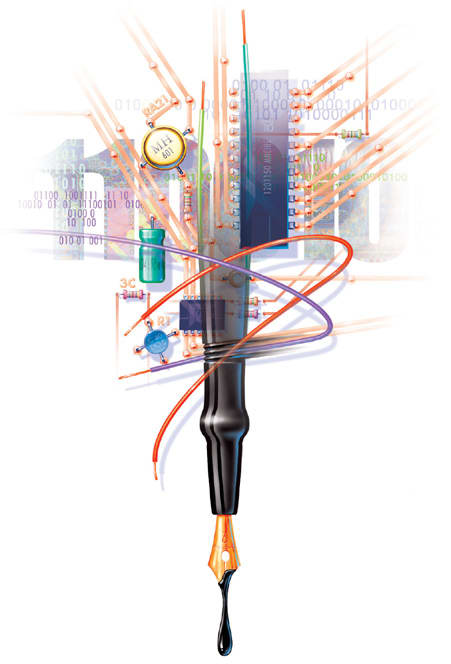The Path to Paperless
By Peter J. Polack, M.D., F.A.C.S.

Becoming Personally Paperless
These tools can deliver time-saving efficiencies.
Although this column deals primarily with making your ophthalmology practice paperless, paperwork has a way of finding its way into your personal life. In this age of being "connected," technologies once believed to free people for more leisure time, such as e-mail and cell phones, have instead become time vampires, sucking the lifeblood out of what precious time you have in a day. So, every minute saved can add up. The following are some ideas that may help you become a more efficient consumer of time.
■ Dual monitor display. Most computers have a video- or monitor-out port which can be connected to a second monitor. Many small high-definition television sets have a videoin port and can toggle between a cable or satellite feed and the signal from your computer. The computer can then be set on dual display, with the television set as your second monitor, effectively doubling (or more) your desktop work area. For example, you can download files while checking your e-mail. Don’t underestimate how useful this setup can be for you.
■ Scan and shred. I have literally rid my office at home of paper by scanning everything from bank statements to expense receipts and then shredding them. A really slick device is a small scanner from Fujitsu called the ScanSnap 500, which scans everything from business cards to double-sided documents into PDF files and can export the contact data into Microsoft Outlook. It also comes with organizer software for storing documents. Make sure you have a good back-up storage device (check out network storage devices from either Iomega or Netgear) for protection.

■ Remote desktop connection. Don’t bring paperwork home in the first place by using this Windows communications accessory. Once set up to your office network by a computer technician, it is quite easy to access drives and files on your practice computer from home and do the work remotely.
■ Time-management tools. Several software programs are available that can help to keep your day more organized. Consider one such as Franklin Covey’s PlanPlus, which is an add-on for Microsoft Outlook. It has modules for setting up various goals in your life, from business to family to personal. Another to consideris David Allen’s GTD (Getting Things Done) system, available through his Web site www.davidco.com helps make your work time more productive.
| In a multipart series, Dr. Polack is describing how a nine-partner practice, Ocala Eye in Ocala, Fla., with six locations and 140 employees, makes the major transition from paper medical records to EMR. During the course of the series, Dr. Polack will provide readers with a "real-time" look at how the implementation is progressing. This is part 21 of the series. |
■ Project management software. Mind-mapping software such as MindManager 6 (from MindJet) has become an indispensable tool in our practice for managing projects from small (customizing EMR templates) to large (building and moving into a new facility). Our chief of IT says he cannot function without it.
But you don’t have to be a computer whiz to take advantage of this tool — it is quite intuitive, and makes every project easy to follow in visual form. If you find yourself with numerous mind-maps, then consider an add-on program to MindManager called Gyronix Results Manager (from Gyronix), a "dashboard" which can handle all your mind-maps and help you to delegate the who, what, where and when of specific projects. OM
Next: Can You Truly Have a Paperless Office?
| Peter J. Polack, M.D., F.A.C.S., is co-managing partner for Ocala Eye, PA. Ocala Eye is a six-location, 10-physician, 140-employee multisubspecialty ophthalmology practice located in Ocala, Fla. He can be reached by email at ppolack@ocalaeye.com. |








